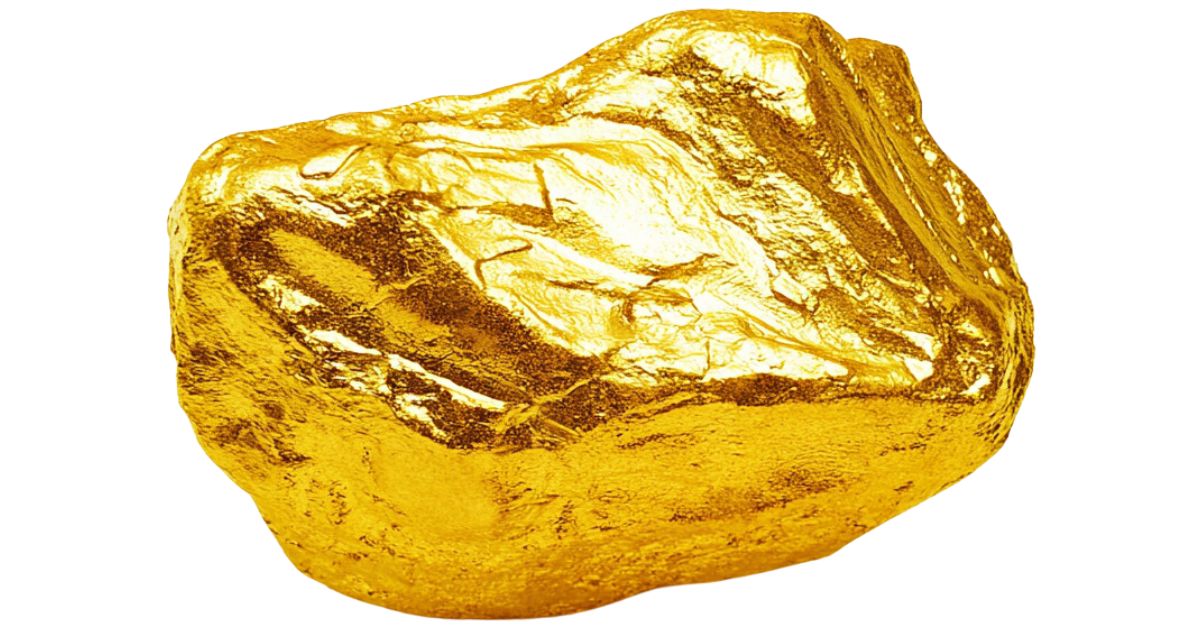Alaska is a land of natural wonders, rich history, and endless adventure. Many areas offer opportunities to find gold in Alaska, from rivers where gold panning is popular to old mining sites rich with history.
Throughout history, many have ventured into the state’s mountains and rivers in search of this precious metal. The excitement of the gold rush drew thousands to the region, and today, it continues to attract treasure seekers.
Hunting for gold is a ton of fun and there are only a few pieces of equipment you need to be successful.
With the right tools and a spirit of exploration, you might just uncover some shiny nuggets or flakes to take home. Let’s dive into some of the best spots to start your search for gold.
How Gold Forms Here
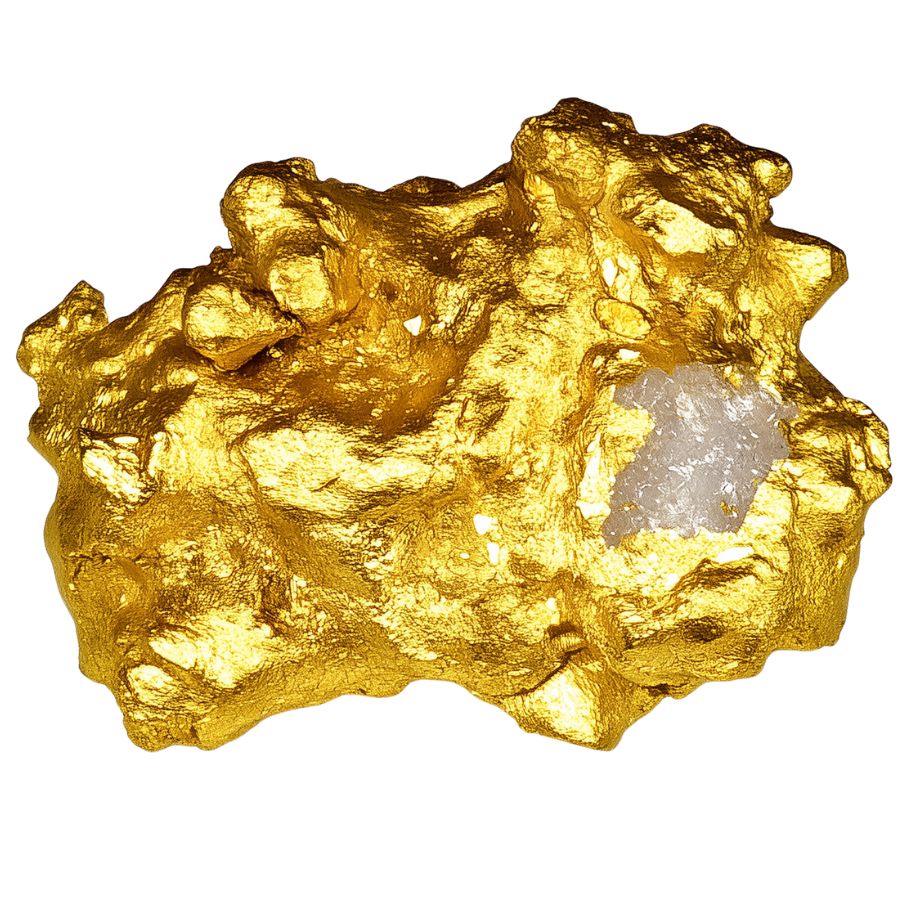
Gold forms through a fascinating journey deep within the Earth. It begins when hot, mineral-rich fluids rise from the mantle. These fluids travel through cracks in the Earth’s crust, carrying dissolved gold and other minerals.
As these fluids cool, the gold precipitates out and accumulates, often forming veins in surrounding rocks like quartz.
Another way gold forms is through magmatic processes. When magma rises, it can also carry gold. As the magma cools, gold crystallizes out, creating deposits.
Over millions of years, geological activities like erosion expose these deposits, allowing us to discover and mine this precious metal. This intricate process makes gold rare and valuable.
Different Forms of Gold Found in the US
Several incredible types of gold can be found in the US as well as in our state. Each is uniquely beautiful and interesting including:
Flour Gold
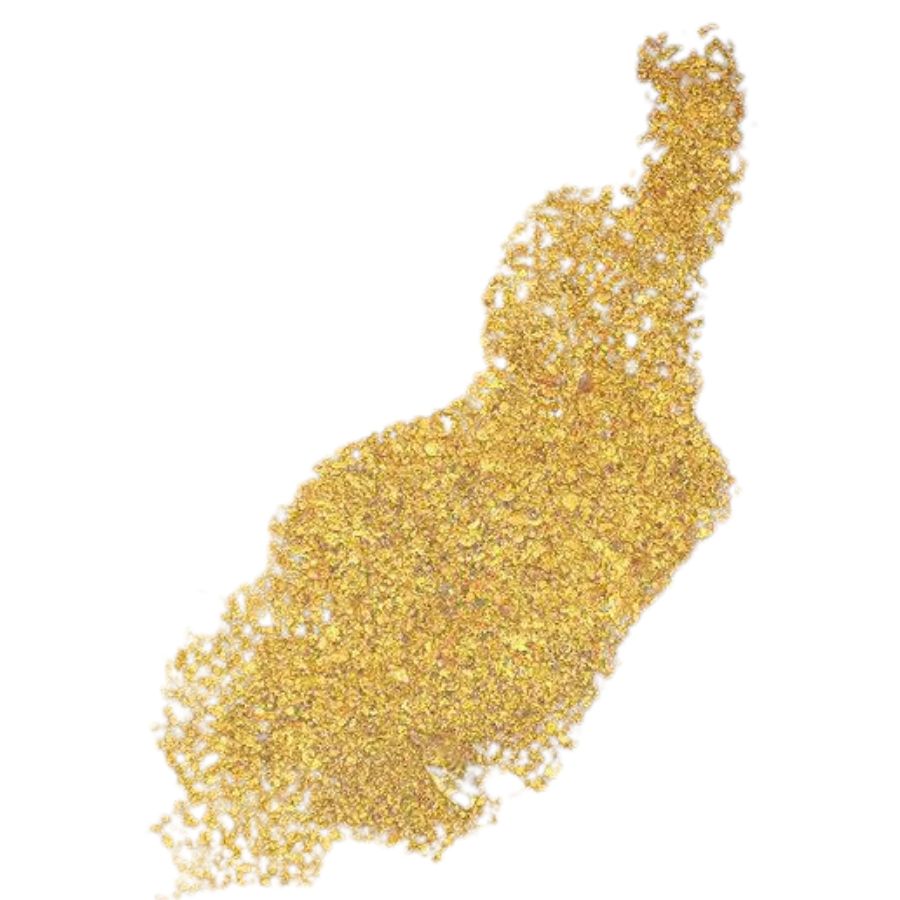
Flour gold is a fascinating form of gold that’s incredibly tiny. Imagine gold particles as small as grains of sand or even finer, like flour. That’s flour gold for you! These little specks are usually less than 40 mesh in size, which means they’re super small.
The tiny size of flour gold makes it tricky to find and collect. It often slips through regular gold panning methods. You’ll find it hiding in the nooks and crannies of riverbeds or mixed in with sand on beaches.
Prospectors get excited when they find flour gold. It’s not just about the gold itself, but what it might mean. Finding these tiny particles can be a clue that larger gold deposits are nearby. It’s like a treasure map leading to bigger finds!
Despite being small, flour gold is valuable. It requires special techniques to collect, like using fine screens or special sluice boxes. This challenge adds to its allure among gold hunters.
Coarse Gold
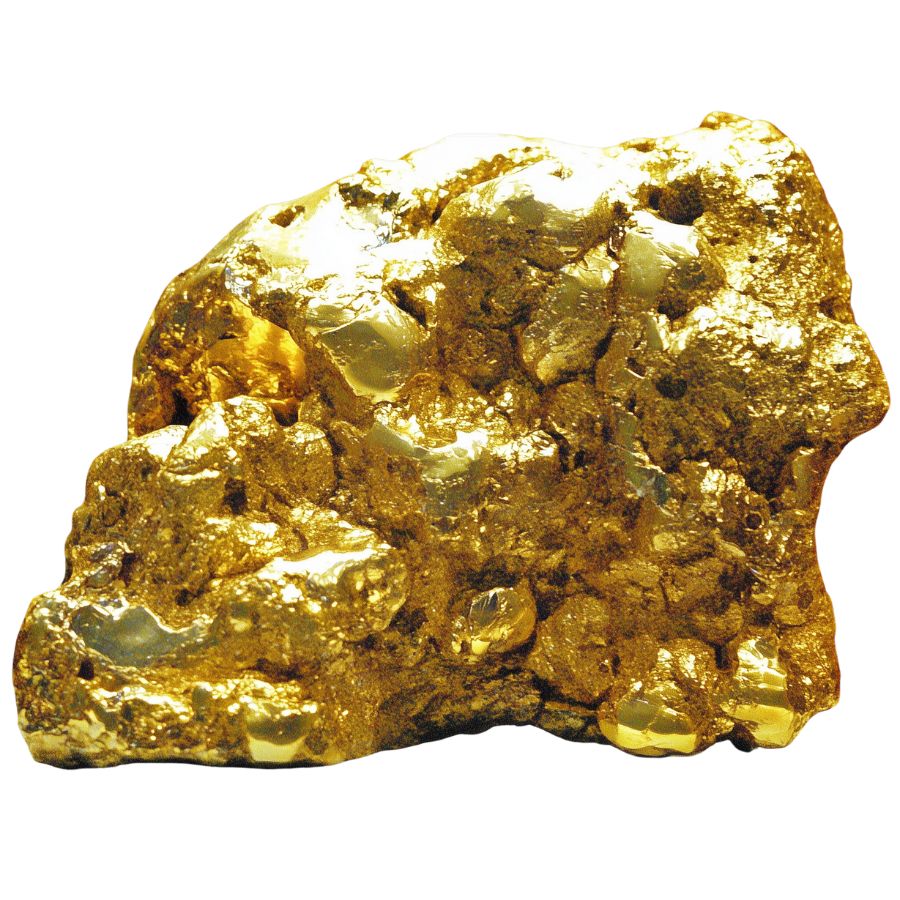
Coarse gold is the showstopper of the gold world. It’s the kind of gold you can actually see and hold in your hand. These pieces are usually bigger than 2 millimeters, which might not sound huge, but in the gold world, it’s pretty significant.
The texture of coarse gold is interesting. It’s often rough and bumpy, not smooth like you might expect. This roughness comes from how it formed in nature. Each piece has its own unique shape and feel.
One cool thing about coarse gold is its weight. Gold is really dense, so even small pieces feel surprisingly heavy. If you’ve ever held a piece, you know what I mean. It’s like holding a tiny, shiny rock that weighs more than it should.
Coarse gold isn’t just valuable for its gold content. Many people collect it for its natural beauty. Each piece tells a story of how it formed and where it came from.
Gold Pickers
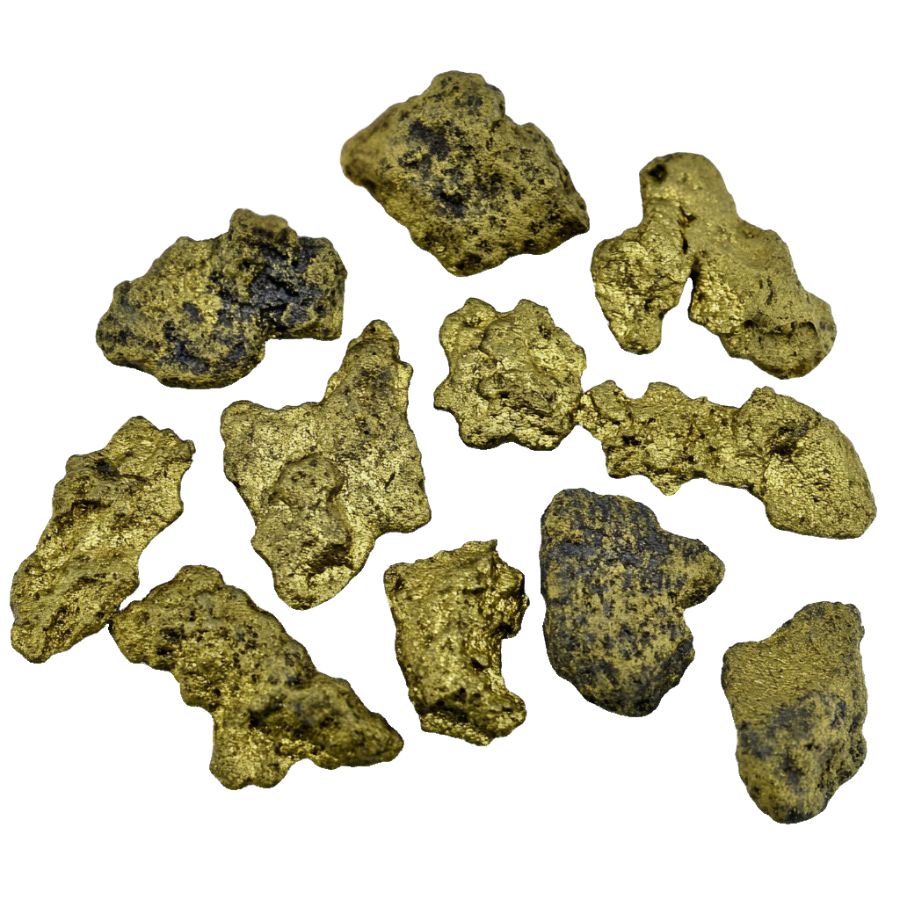
Gold pickers are nature’s little sculptures. They’re small pieces of gold that have been shaped by water and time. Each picker is unique, like a tiny work of art.
These nuggets have a bright, yellow color that really catches the eye. It’s not the brassy yellow of fool’s gold, but a rich, warm color that’s unmistakably gold. When you see one, you know it’s the real deal.
Gold pickers are heavier than they look. This is because gold is denser than most other materials found in riverbeds. If you pick one up, you’ll be surprised by its weight compared to its size.
Collectors love gold pickers for their individuality. No two are exactly alike. They’re shaped by nature, so each one has its own bumps, curves, and character. It’s this uniqueness that makes them special beyond just their gold content.
Gold Nuggets
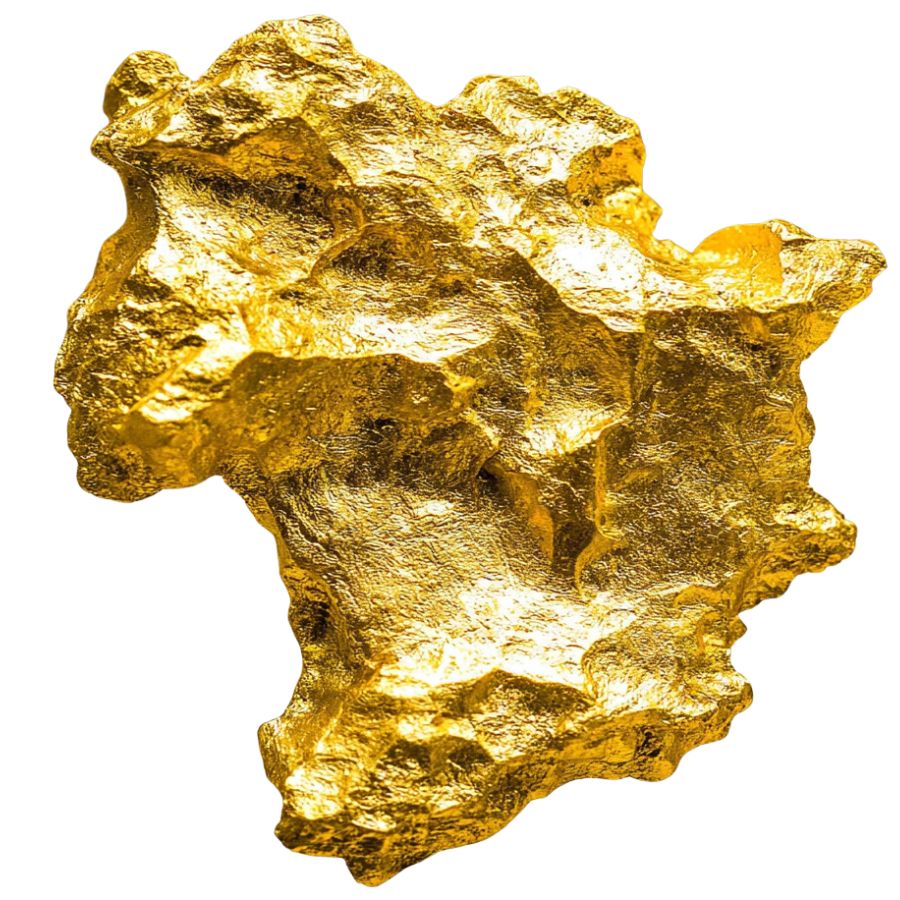
Gold nuggets are the rock stars of the gold world. They’re larger pieces of natural gold, often with interesting shapes and textures.
The color of gold nuggets is something special. They have a deep, rich yellow that almost seems to glow. This color can vary a bit depending on how pure the gold is, but it’s always eye-catching.
What’s really cool about gold nuggets is their rarity. Less than 2% of all gold found comes in nugget form. This makes them extra special and valuable. Collectors and investors often pay more for nuggets than for the same weight in gold bars.
Notable gold nuggets like the “Welcome Stranger” and “Pepita Canaã” have gained fame due to their size and historical context. The Pepita Canaã is currently recognized as the largest surviving natural nugget, weighing approximately 60.8 kg (134.1 lbs).
Leaf Gold
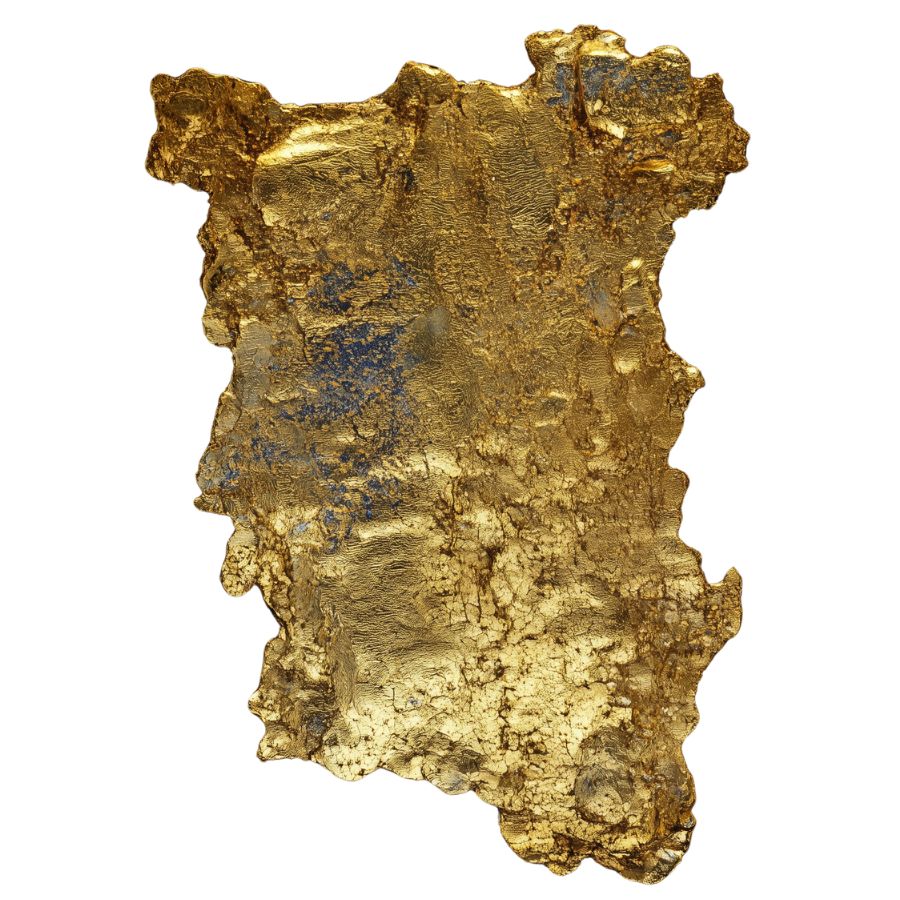
Leaf gold is a stunning form of gold that appears as large, thin plates or sheets of gold that can resemble leaves. These sheets often display intricate dendritic patterns or smooth growth forms.
What makes leaf gold special is how flat and thin it is. Unlike chunky gold nuggets, leaf gold spreads out in large, thin pieces. This unique shape makes it really eye-catching and different from other types of gold.
One of the most sought-after qualities of leaf gold is the labor-intensive process required to extract and shape it. The beauty of leaf gold specimens is such that they are often considered museum-quality items.
Wire Gold
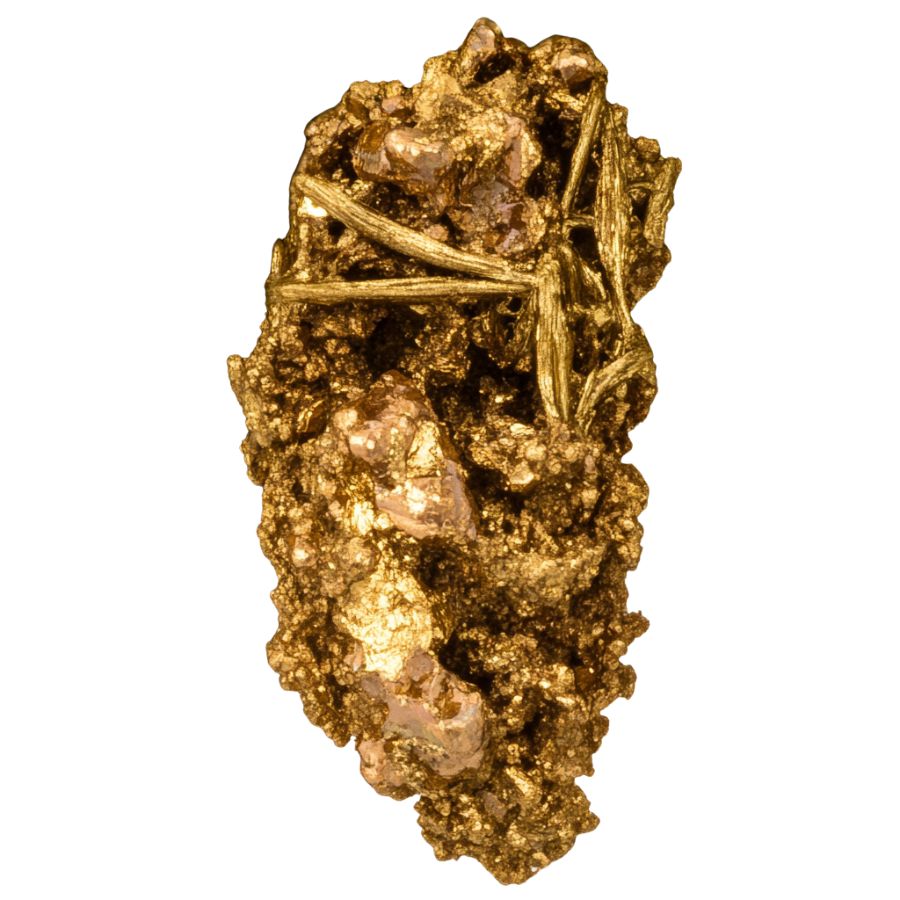
Wire gold is typically found in elongated, thread-like structures that resemble fine wires or filaments. This formation is a result of the way gold crystallizes in certain geological conditions.
Wire gold exhibits the characteristic metallic yellow hue of gold, but the wire-like formations can create a visually striking contrast with the surrounding materials, enhancing its aesthetic appeal
Wire gold is pretty rare. It needs special conditions to form, which is why it’s not as common as other types of gold. This rarity makes it extra special to collectors and scientists who study how minerals form.
People love wire gold not just because it’s gold, but because it’s beautiful. Its delicate, intricate shapes make it popular with collectors who appreciate natural art. Some pieces of wire gold are so impressive that they’ve become famous in the world of mineral collecting.
Sponge Gold
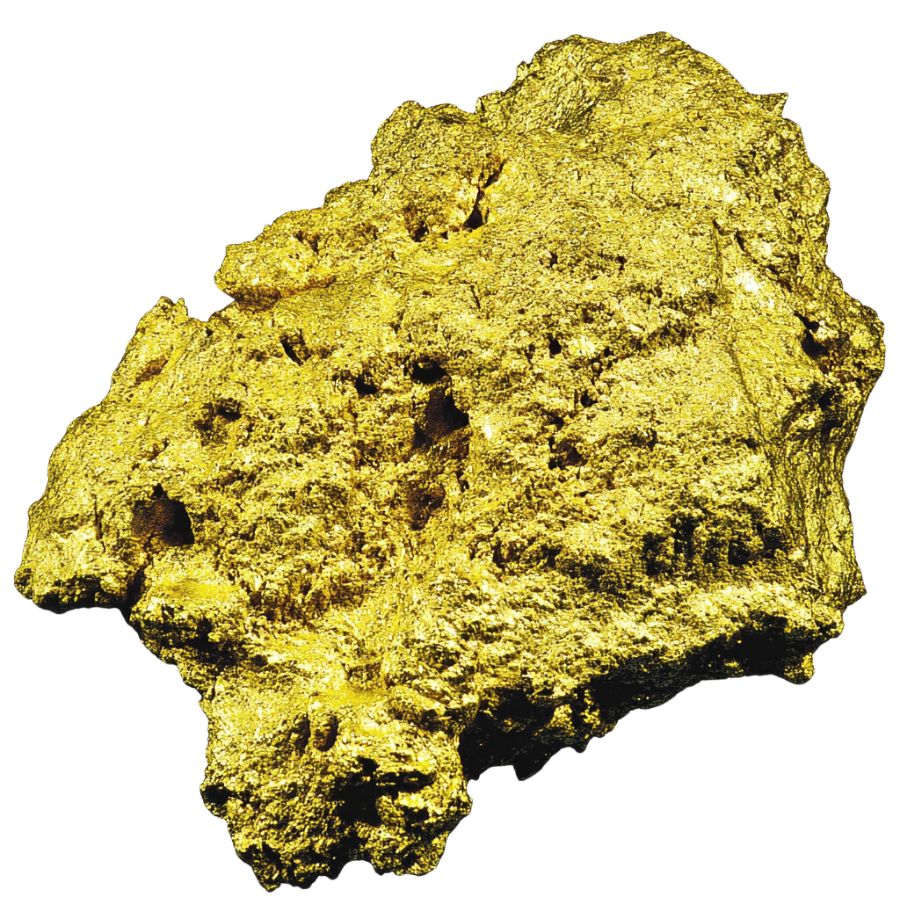
Sponge gold is a fascinating type of gold that looks just like its name suggests – a golden sponge! It’s full of little holes and spaces, giving it a unique, bubbly appearance.
The way sponge gold forms is pretty cool. It happens when gold comes out of a special gold-bearing solution. As it forms, it creates all these tiny spaces, making it look spongy and irregular.
Collectors get excited about sponge gold because it’s not very common. Its unusual look makes it a prized find. Each piece of sponge gold is different, with its own pattern of holes and bumps.
Despite its holey appearance, sponge gold is still valuable. Its unique texture doesn’t take away from its worth as gold. In fact, some people think this unusual form makes it even more special and interesting.
Electrum
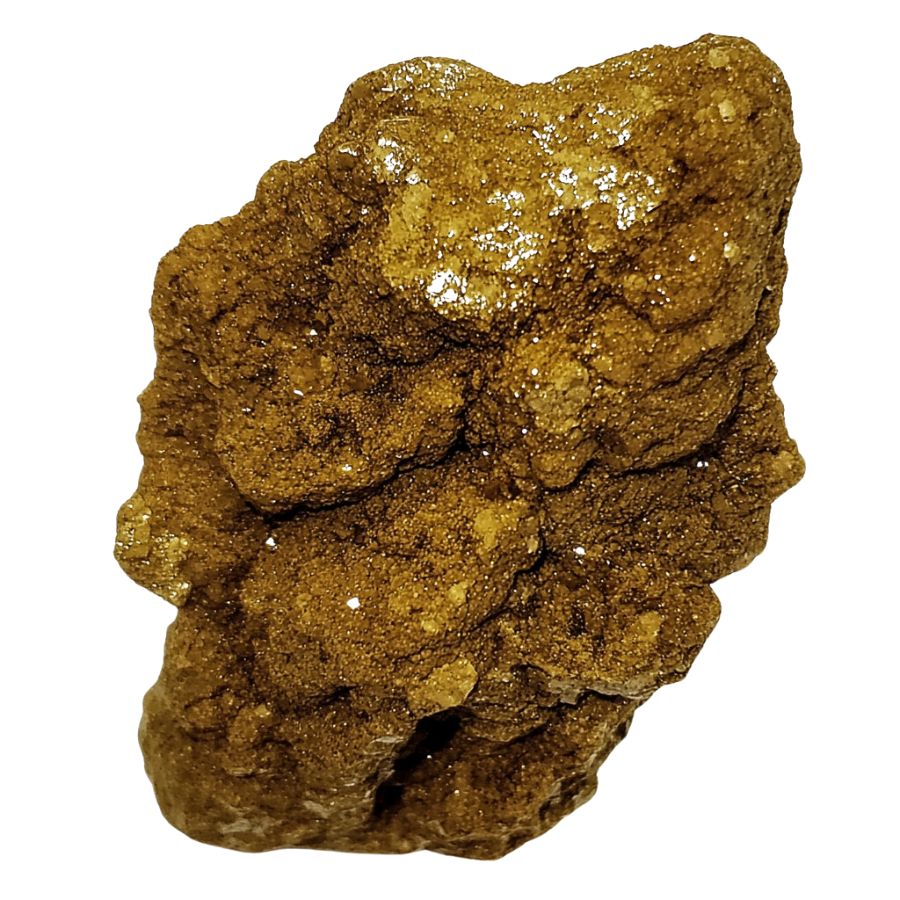
Electrum is a naturally occurring alloy primarily composed of gold and silver, with trace amounts of other metals such as copper and platinum.
Electrum’s color varies significantly based on the gold-to-silver ratio. It can range from pale yellow to bright yellow, and sometimes even to a near-white appearance when silver content is high
One cool thing about Electrum is its history. People have been using it for thousands of years. In fact, it was one of the first metals used to make coins way back in the 7th century BC.
Unlike many other alloys, electrum occurs naturally, which makes it unique among precious metals. It’s tougher than pure gold, which makes it great for making things that need to last.
In nature, electrum forms in interesting shapes. It often makes octahedral crystals, which are like two pyramids stuck together at the base. This natural occurrence makes electrum special among precious metals.
Gold-Copper Alloy
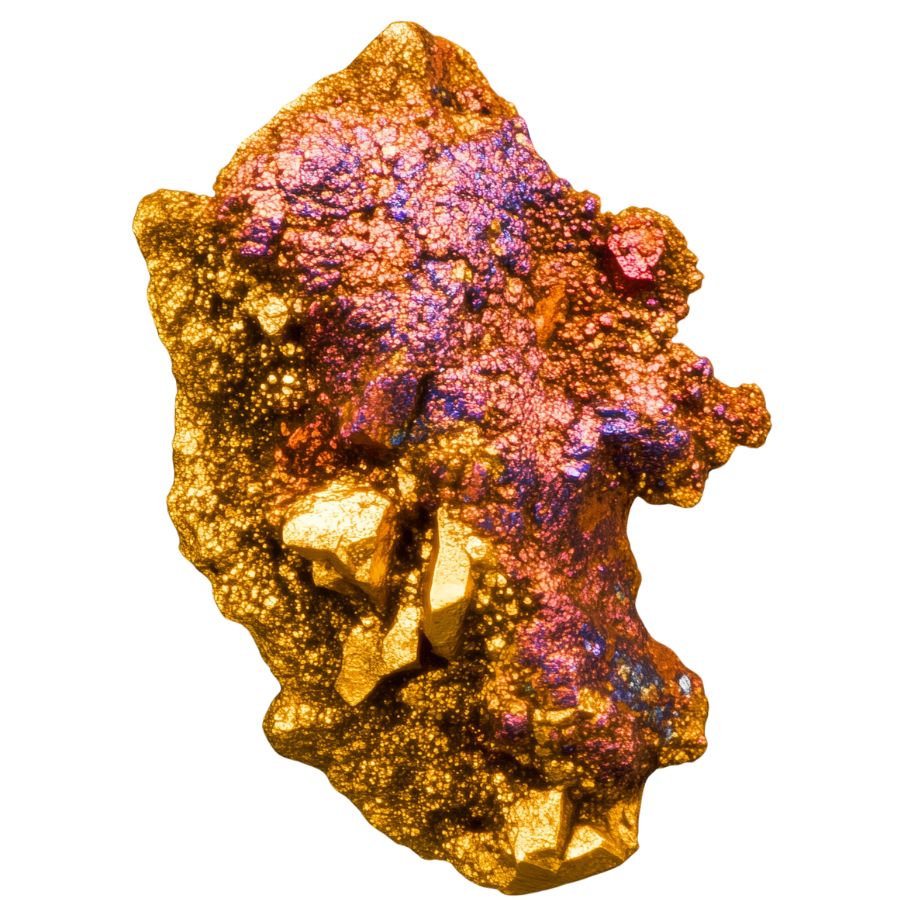
Gold-copper alloys typically exhibit a reddish tint due to the copper content, which can vary depending on the proportion of gold and copper in the alloy.
These alloys can tarnish upon exposure to air because of the oxidation of copper, leading to a darkened appearance over time. When heated, they may blacken due to similar oxidation processes.
In terms of malleability, these alloys are generally less malleable and harder than pure gold, particularly when the copper content exceeds 12%, making them more challenging to work with.
Throughout history, people have used gold-copper alloys to make coins. Different times and places had their own recipes for these alloys.
Gold Crystals
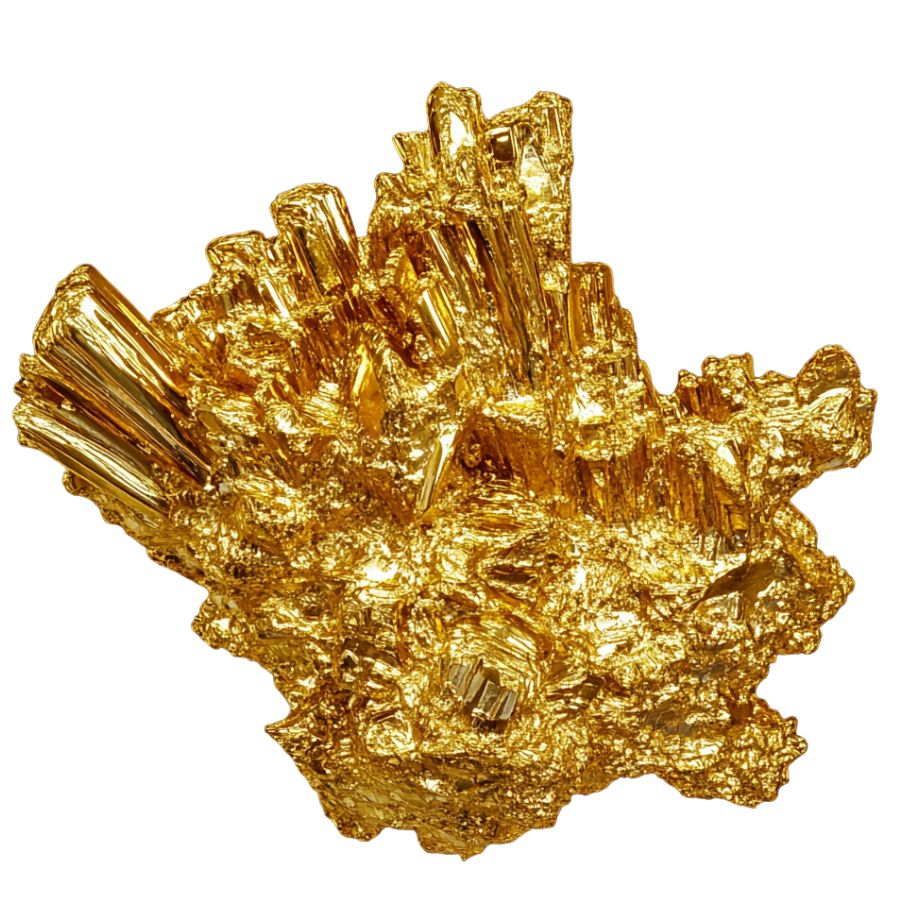
Gold crystals are like nature’s golden sculptures. They form in beautiful, geometric shapes that can take your breath away. Unlike smooth gold nuggets, these crystals have distinct edges and faces.
The color of gold crystals is something special. They shine with a bright, slightly orange-yellow hue that’s unmistakably gold. This color comes from how gold reflects light, making the crystals look almost like they’re glowing.
One amazing thing about gold crystals is how soft and bendable they are. A tiny bit of gold can be stretched into a sheet big enough to cover a large area. This property makes gold crystals fascinating to study and work with.
Finding natural gold crystals is pretty rare. Most we see don’t form perfect crystal shapes. This rarity makes gold crystals highly valued by collectors and scientists who study how minerals form.
What Rough Gold Looks Like
Identifying a rough gold might seem tricky, but with a few tips, you can spot one even if you’re not a rock expert. Here’s how you can do it.
Check for a Glassy or Waxy Luster
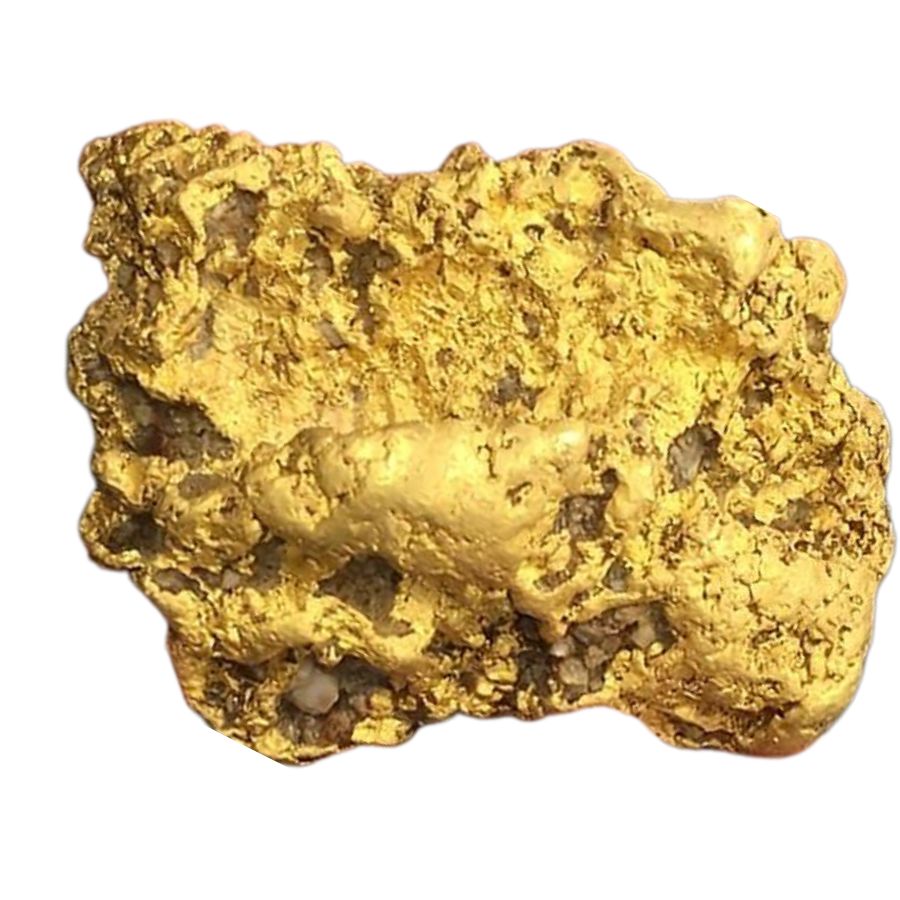
When you’re out searching for rough gold, the first thing to look at is how it shines. Real gold has a glassy or waxy luster. It should look bright and shiny, even when shaded.
If you find something that seems dull or lacks that shiny quality, it might not be gold. You can test this by holding the piece in sunlight and then shading it with your hand. If it still glows, you may have found the real deal.
Assess the Density and Weight
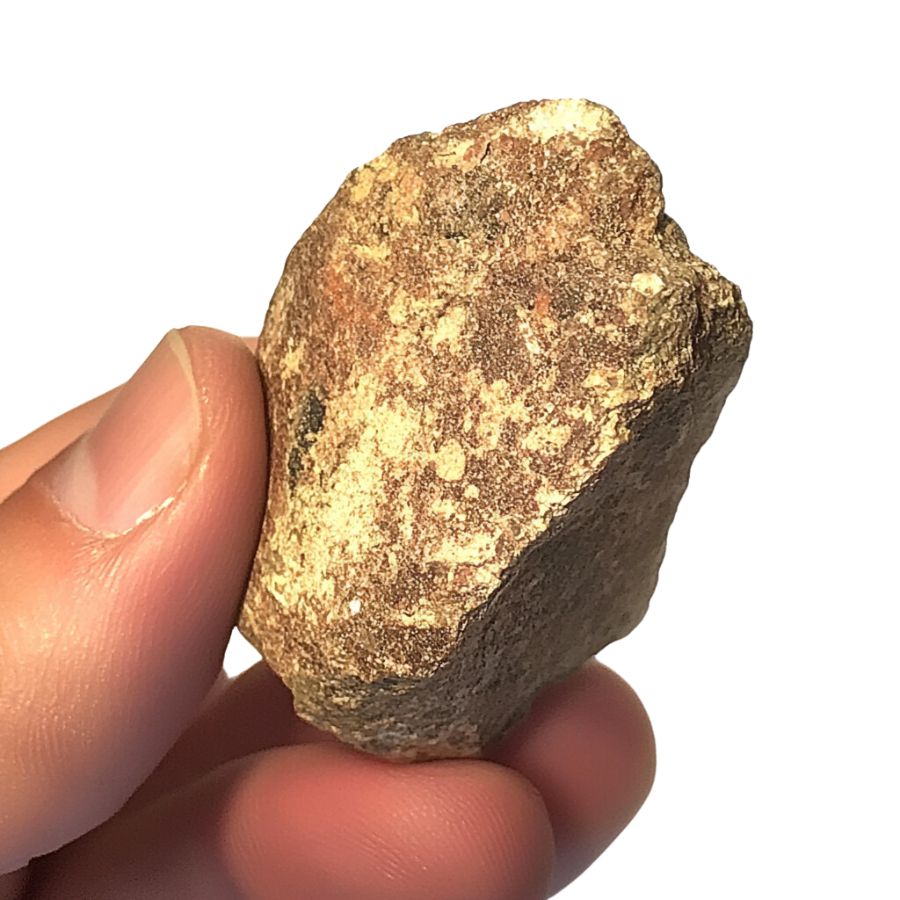
Gold is heavy—much heavier than most other minerals. If you pick up a shiny rock and it feels surprisingly light, it’s likely not gold.
A simple way to check this is to compare it with a rock of similar size. If the shiny one feels heavier, that’s a good sign.
Gold’s density is about 19.3 grams per cubic centimeter, which means it packs a lot of weight into a small volume.
Observe the Color
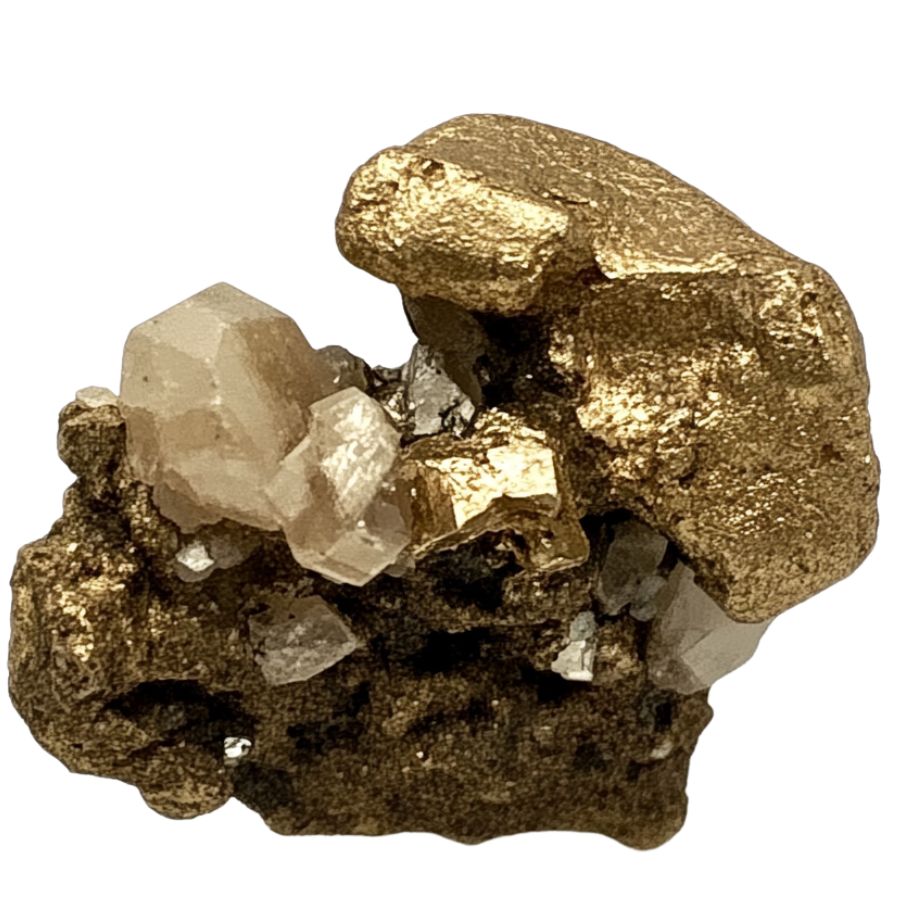
The color of raw gold is typically a brassy yellow. It should look bright and vibrant, not faded or washed out.
If you find something that looks golden but has a more muted color, like brown or greenish hues, it’s probably not real gold. Remember, real gold maintains its color even when wet or in the shade, while fake gold often loses its shine.
Feel the Texture
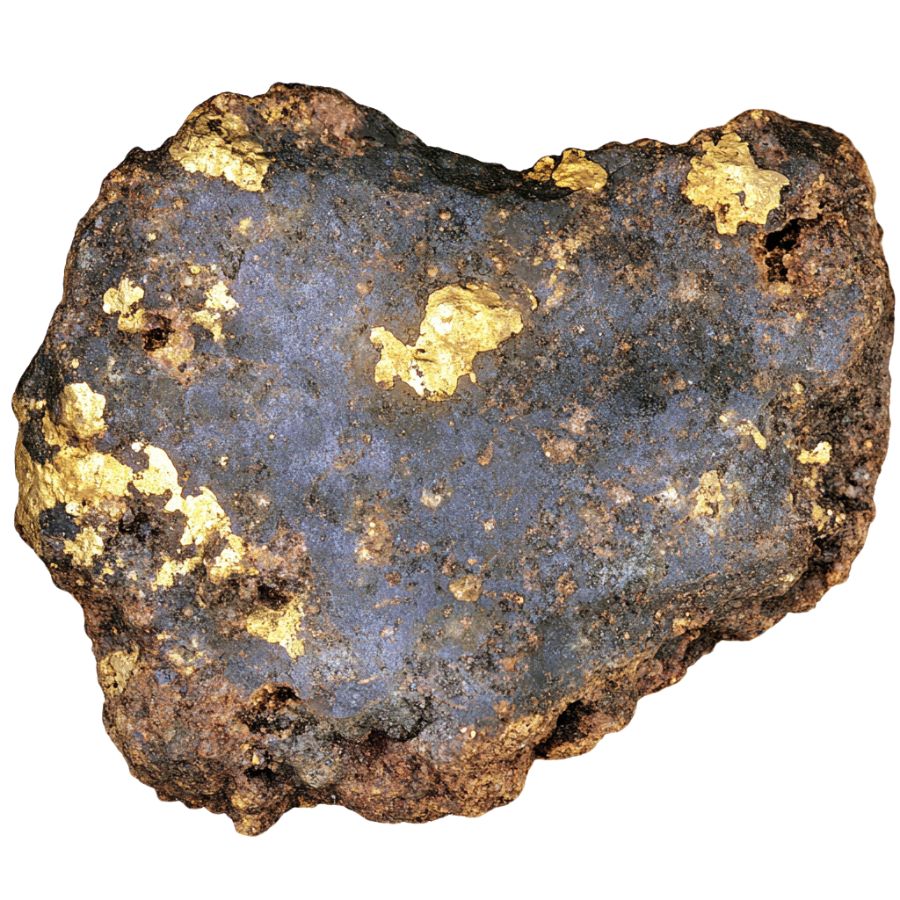
When you hold rough gold, notice its texture. Real gold is smooth but can also have some bumps from tumbling in rivers and streams. If you find something that feels rough or crumbles easily under pressure, it’s likely fool’s gold (like iron pyrite).
You can also gently squeeze it; if it bends easily without breaking, it’s a good indicator that you’re holding real gold.
By keeping these tips in mind while you’re out searching for rough gold, you’ll improve your chances of identifying genuine pieces versus imitations!
A Quick Request About Collecting
Always Confirm Access and Collection Rules!
Before heading out to any of the locations on our list you need to confirm access requirements and collection rules for both public and private locations directly with the location. We haven’t personally verified every location and the access requirements and collection rules often change without notice.
Many of the locations we mention will not allow collecting but are still great places for those who love to find beautiful rocks and minerals in the wild without keeping them. We also can’t guarantee you will find anything in these locations since they are constantly changing.
Always get updated information directly from the source ahead of time to ensure responsible rockhounding. If you want even more current options it’s always a good idea to contact local rock and mineral clubs and groups
Tips on Where to Look
Once you get to the places we have listed below there are some things you should keep in mind when you’re searching:
Look for Gold in Sedimentary Rocks
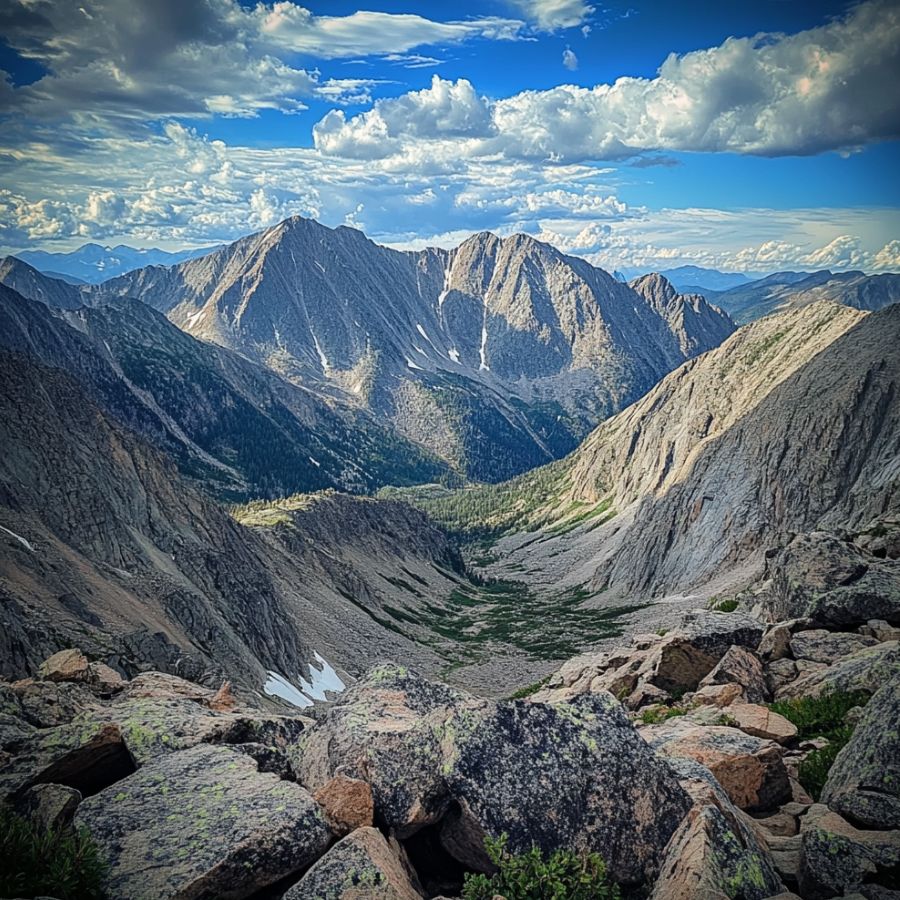
Sedimentary rocks are a great place to start. These rocks form from layers of materials over time. Gold can get trapped in these layers.
Look near rivers or streams where sediment is washed away. The flowing water helps to expose gold flakes and nuggets. It’s like nature’s treasure hunt!
Explore Old Mines
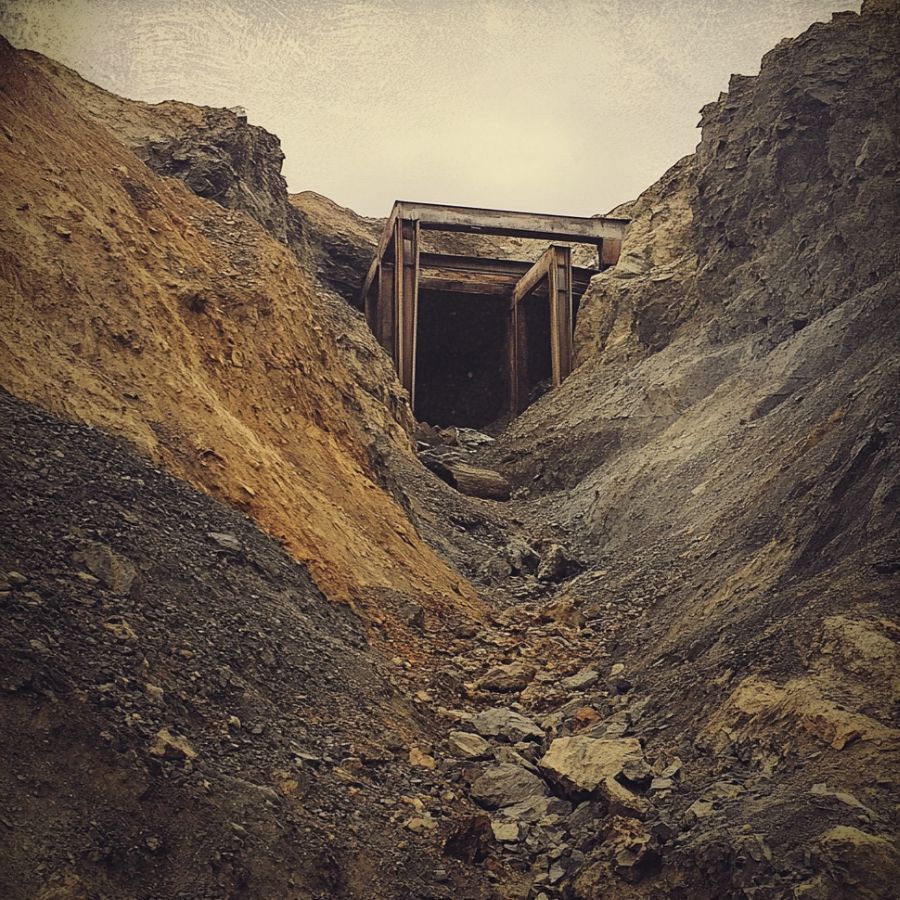
Old mines can be gold hotspots. Many mines have been abandoned but still hold gold. You can often find public lands where you can explore these areas.
Just remember to check if it’s safe and legal to enter. Some places might require permits, so do your homework first.
Search Along Riverbeds
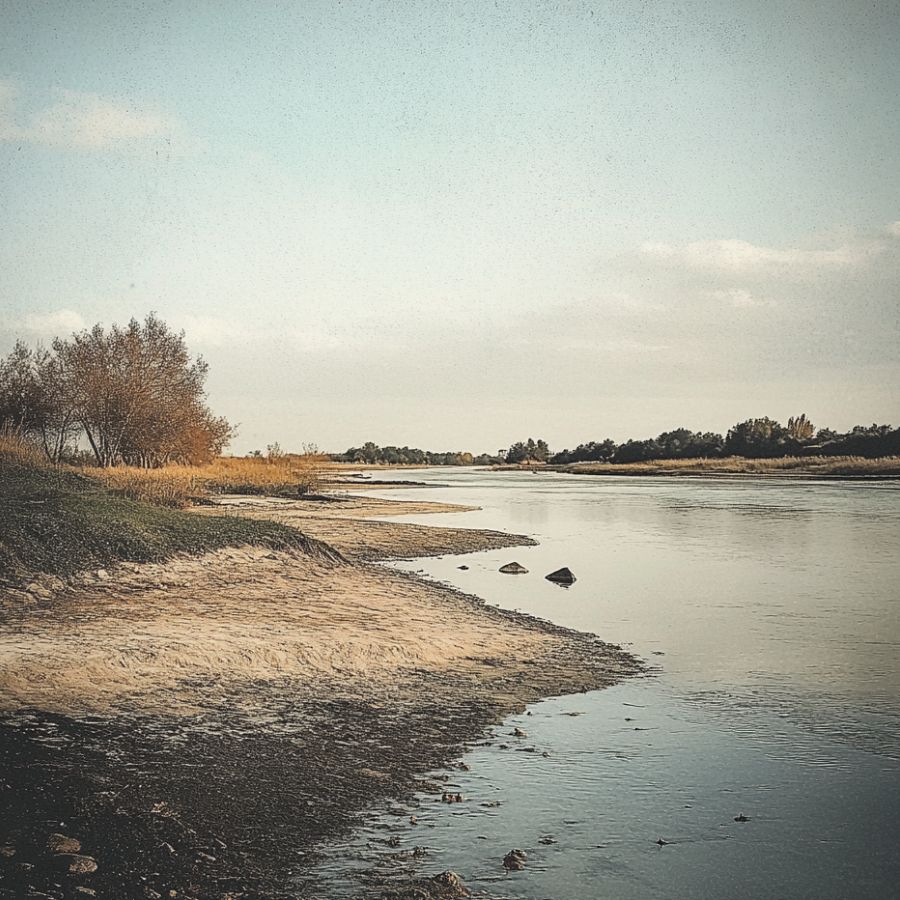
Rivers are natural pathways for gold. As water flows, it carries gold from upstream and deposits it along the banks.
Panning for gold in riverbeds is a popular method. Use a simple pan to sift through the gravel and sand. You never know what you might find hiding beneath the surface!
Check Out Gravel Bars
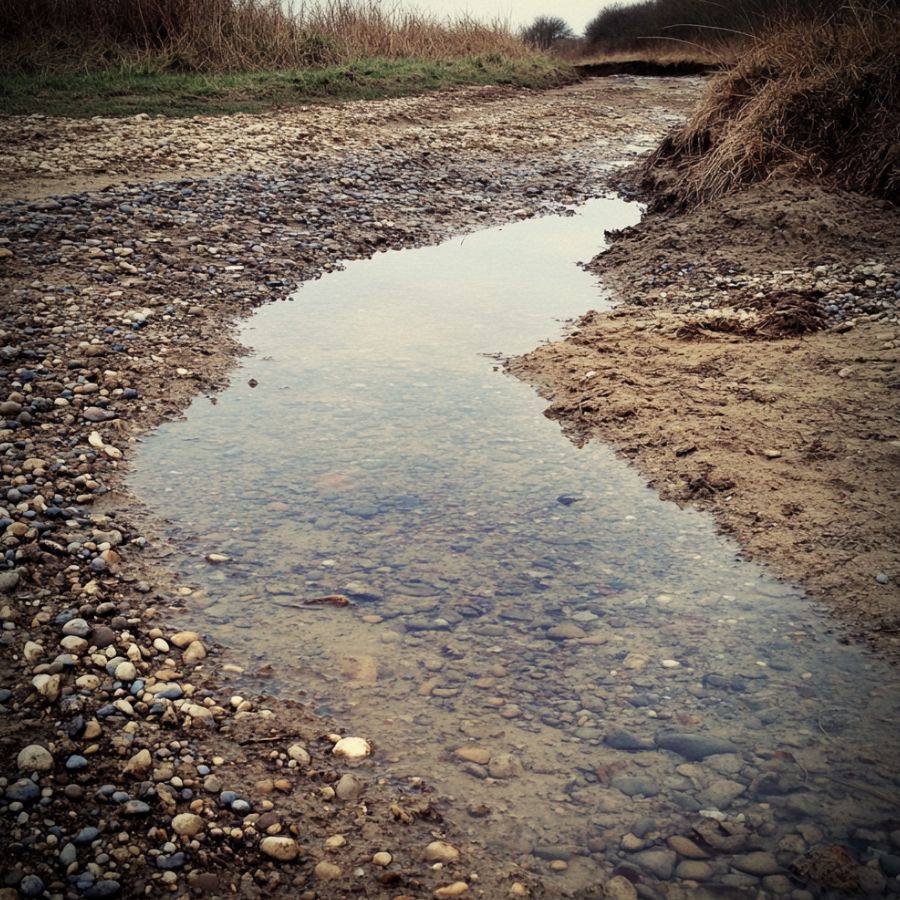
Gravel bars are another promising spot for finding gold. These are areas where the current slows down, allowing heavier materials like gold to settle.
Look for spots where the river bends or widens. You can often find these bars along many rivers across the country.
Some Great Places To Start
Here are some of the better places in the state to start looking. Before you head out don’t forget to check out our beginners guide to gold hunting equipment. There are surprisingly few pieces of gear that you need to beatable to find a lot of gold. You don’t want to get all the way out there and not be able to collect all the gold!
Juneau

Juneau has a rich gold mining history that began in the late 1800s when Joe Juneau and Richard Harris discovered placer gold in the Silver Bow Basin.
The area quickly transformed as mining operations flourished, leading to the establishment of the Alaska-Juneau Gold Mining Company, one of the largest low-grade ore producers in the world.
Gold mining significantly influenced the city’s development, with the AJ Mine and Gastineau Mill processing millions of tons of ore and yielding substantial gold production.
Numerous mines and prospects still exist within the city’s mining districts, where gold continues to be sought after.
If you want REAL results finding incredible rocks and minerals you need one of these 👇👇👇
Finding the coolest rocks in isn’t luck, it's knowing what to look for. Thousands of your fellow rock hunters are already carrying Rock Chasing field guides. Maybe it's time you joined the community.
Lightweight, mud-proof, and packed with clear photos, it’s become the go-to tool for anyone interested discovering what’s hidden under our red dirt and what they've already found.
Join them, and make your next rockhounding trip actually pay off.
What makes it different:
- 📍 Find and identify 140 incredible crystals, rocks, gemstones, minerals, and geodes across the USA
- 🚙 Field-tested across America's rivers, ranchlands, mountains, and roadcuts
- 📘 Heavy duty laminated pages resist dust, sweat, and water
- 🧠 Zero fluff — just clear visuals and straight-to-the-point info
- ⭐ Rated 4.8★ by real collectors who actually use it in the field
Southeast Fairbanks Census Area

Southeast Fairbanks Census Area is a sparsely populated region, with a population of around 7,000 residents as of 2022. Despite its limited number of inhabitants, the area is rich in gold mines and prospects.
Notable mining districts include the Tok Mining District, Eagle Mining District, and Chistochina Mining District, among others.
Yukon River

The Yukon River is a major watercourse in northwestern North America, flowing through Canada’s Yukon territory before continuing westward into the U.S., where it empties into the Bering Sea at the Yukon–Kuskokwim Delta.
Gold can be found in areas along the Yukon River, particularly following the discovery of gold deposits by Ed Schieffelin in 1883 and subsequent finds during expeditions in the late 1800s.
The river played a crucial role in transportation during the Klondike Gold Rush from 1896 to 1903, facilitating movement for those seeking fortune in the goldfields.
Anchorage

Anchorage, officially the Municipality of Anchorage, is the most populous city in the region. Gold was discovered along Turnagain Arm in 1888, leading to an influx of prospectors and the establishment of small towns like Spenard and Girdwood.
Its coastal landscape includes treacherous mudflats and tidal inlets, while the Chugach Mountains rise to the east, offering a stunning backdrop to this vibrant urban area.
The city features various mining districts with mines and prospects where gold can still be found today.
Kuskokwim Mountains

The Kuskokwim Mountains are located in the Yukon-Koyukuk Census Area, stretching about 400 kilometers from Canyon Creek and Chikuminuk Lake in the southwest to the Tanana River in the northeast.
The mountains are named after the Kuskokwim River, which flows through them, as well as the Aniak and Nowitna rivers.
Economic deposits of placer gold were discovered near Aniak in 1901, contributing to a total production of 3.5 million troy ounces of gold through 2004.
Always Confirm Access and Collection Rules!
Before heading out to any of the locations on our list you need to confirm access requirements and collection rules for both public and private locations directly with the location. We haven’t personally verified every location and the access requirements and collection rules often change without notice.
Many of the locations we mention will not allow collecting but are still great places for those who love to find beautiful rocks and minerals in the wild without keeping them. We also can’t guarantee you will find anything in these locations since they are constantly changing.
Always get updated information directly from the source ahead of time to ensure responsible rockhounding. If you want even more current options it’s always a good idea to contact local rock and mineral clubs and groups
Places Gold has been found by county
| County | Location |
| Aleutians East Borough | Unga Island |
| Aleutians West Census Area | Aleutian Islands Mining District |
| Bethel Census Area | Aniak Mining District |
| Bethel Census Area | Bethel Mining District |
| Bethel Census Area | Goodnews Bay |
| Bethel Census Area | Iditarod Mining District |
| Denali Borough | Bonnifield Mining District |
| Denali Borough | Kantishna Mining District |
| Dillingham Census Area | Aniak Mining District |
| Dillingham Census Area | Bristol Bay |
| Fairbanks North Star Borough | Chicken |
| Fairbanks North Star Borough | Circle Mining District |
| Fairbanks North Star Borough | Fairbanks Mining District |
| Hoonah-Angoon Census Area | Chichagof Mining District |
| Hoonah-Angoon Census Area | Petersburg Mining District |
| Kenai Peninsula Borough | Homer Mining District |
| Kenai Peninsula Borough | Hope Mining District |
| Kenai Peninsula Borough | Seward Mining District |
| Ketchikan Gateway Borough | Area mines and prospects |
| Kodiak Island Borough | Area mines |
| Kusilvak Census Area | Marshall Mining District |
| Matanuska-Susitna Borough | Valdez Creek Mining District |
| Matanuska-Susitna Borough | Willow Creek Mining District |
| Matanuska-Susitna Borough | Yentna Mining District |
| Nome Census Area | Council Mining District |
| Nome Census Area | Kougarok Mining District |
| Nome Census Area | Koyuk Mining District |
| Nome Census Area | Nome Mining District |
| Nome Census Area | Port Clarence Mining District |
| Northwest Arctic Borough | Fairhaven Mining District |
| Northwest Arctic Borough | Shungnak Mining District |
| Petersburg Borough | Kupreanof Mining District |
| Prince of Wales-Hyder Census Area | Cleveland Peninsula |
| Prince of Wales-Hyder Census Area | Prince of Wales Island |
| Skagway | Skagway Mining District |
| Valdez-Cordova Census Area | Chisana Mining District |
| Valdez-Cordova Census Area | Chistochina Mining District |
| Valdez-Cordova Census Area | Copper River |
| Valdez-Cordova Census Area | Nelchina Mining District |
| Valdez-Cordova Census Area | Nizina Mining District |
| Valdez-Cordova Census Area | Prince William Sound Mining District |
| Valdez-Cordova Census Area | Yakataga Mining District |
| Yakutat | Yakutat Mining District |
| Yukon-Koyukuk Census Area | Chandalar Mining District |
| Yukon-Koyukuk Census Area | Hot Springs Mining District |
| Yukon-Koyukuk Census Area | Hughes Mining District |
| Yukon-Koyukuk Census Area | Iditarod Mining District |
| Yukon-Koyukuk Census Area | Innoko Mining District |
| Yukon-Koyukuk Census Area | Koyukuk Mining District |
| Yukon-Koyukuk Census Area | Melozitna Mining District |
| Yukon-Koyukuk Census Area | Rampart Mining District |
| Yukon-Koyukuk Census Area | Ruby Mining District |
| Yukon-Koyukuk Census Area | Tolovana Mining District |
Now that you know where to look make sure you have the right equipment for the job. Take a look at our Beginner's Guide to Gold Hunting Equipment and make sure you're ready to start collecting! There are only a few simple pieces of equipment that you need.

